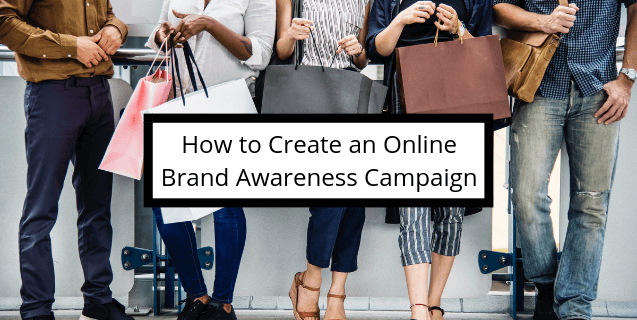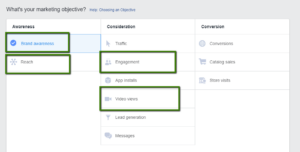Branding, whether your company is B2C or B2B, is critical if you want to stand out from the crowd. Especially online, where every target audience is exposed to upwards of 4,000 direct and indirect ads a day, strong branding is what cuts through the noise. In order to effectively capture the attention of users, a brand needs to utilize creative tactics to present their story, products, and services on the channels where their target audience is active.
This requires a thorough understanding of your target audience, what they care about the most, what you can add to their lives, and where they spend the bulk of their time online. But before we dive into the who and how of creating brand awareness, you’ll need to understand exactly what brand awareness means and what it can do for your company.
What is Brand Awareness?
Brand awareness is the degree to which consumers are aware of a brand and what it sells or provides. Branding helps a company differentiate itself from other competitors in the same field, while marketing is used to ensure that branding gets visibility needed to gain traction. Thus, a brand marketing campaign is needed. Better brand awareness can result in:
- Brand loyalty & returning customers
- Increased amounts of positive UGC (User-Generated-Content)
- Credibility & authority in the market
- Trust from current and future customers
- Helping your bottom line, as consistent brand representation can increase revenue by more than 20%
- Future launch success for new products or services, thanks to the strong reputation the brand has created
Brand awareness is also the start of the customer journey; it could be the first touchpoint a user has with your brand. From that first point of awareness, it’s a marketing team’s job to ensure that other exposures to the brand move a consumer or potential client further through the customer journey.
Online Brand Awareness Campaigns: Where to Start?
Just like high-quality branding, an online brand awareness campaign can’t be created overnight. Instead, it takes time to set up and plan. To make it as effective as possible, a marketing team will need to take into account:
- Defining target audiences: Narrow down large audiences with specific targeting, based on demographics, interests, behaviors, income, and competitor interests.
- Identifying marketing channels: Understand which channels your target audience is most active on — and select those channels as the method for delivering your brand awareness campaign.
- Developing creative content: Create content that captivates a user and makes them pause and pay attention to your brand while scrolling through their feed.
- Developing messaging: Speak directly to the user with helpful, succinct messaging that resonates with a users’ emotions.
- Establishing success metrics: The main KPIs or metrics needed to measure brand awareness campaigns are reach, impressions, and engagement. Establish goals for these metrics and what success will look like for your brand at the end of the campaign.
- Setting a budget: Before launching any ad campaigns, make sure you have a budget established and allocated for the campaign.
Because social media is one of the best ways to get in front of target audiences & gain visibility, it’s where many companies choose to start their awareness campaigns.
5 Tips for Setting Up Brand Awareness Campaigns on Facebook & Instagram
50 percent of people follow at least one brand on social media, which makes platforms like Facebook, Instagram, Twitter, and LinkedIn some of the best tools for increasing brand awareness. To help you get the most from your brand awareness campaigns on social media — specifically Facebook and Instagram — here are a few expert tips:
- Use a mixture of campaigns with the objectives of ‘Brand Awareness’, ‘Reach,’ and ‘Engagement.’ These objectives in Facebook Ads Manager are the types of campaigns that are best for achieving brand awareness. If you have video content, you could also add a ‘Video Views’ objective. You can promote existing content already published on your brand’s Facebook and Instagram pages as well as include new content.
- Utilize keyword research in Facebook Ads Manager. This tool helps you see the different types of topics and themes you can target to build qualified audiences.
- Use paid and organic Instagram stories. Instagram Stories are relatively new to brands and a great method of increasing reach & impressions. Use images or videos with sound & stickers to attract people tapping through Stories in their feed. Bonus: IG Stories ads are created using the Facebook Ads Manager, which means your team will be able to pull metrics from both Instagram and Facebook ads on a single platform.
- A/B test your ads. Try out different messages while keeping the type of content and audience the same. See which message resonates best with your target audiences.
- Don’t use duplicate content on multiple platforms. Ads and content built for Instagram should be different than the ads and content made for Facebook. They should also be unique to each platform’s best practices to ensure optimal user experience and successful results.
- Use video whenever possible. Video doesn’t have to be a massive production expense. Try creating videos in the form of slideshows, gifs, or quick animated text videos. Doing this will allow you to build an audience of users who engage with the videos, which is great for future retargeting and middle-of-funnel content.
Here’s an example of a video we created for a client, To-Table, that promotes a narrative about how making a romantic dinner using their products is a good idea for Valentine’s Day.
And while the above tips are all useful in implementing a brand awareness campaign, the one thing you should keep in mind — wherever you’re instituting your campaign — is to pick a differentiator or message that users actually care about. After all, 89 percent of American consumers are loyal to brands that share their values. Do the research to discover the main reason(s) people like your brand, products, or services and then speak to that. Find memorable, valuable ways to connect with your audience; businesses see the returns on their investments when they do.

